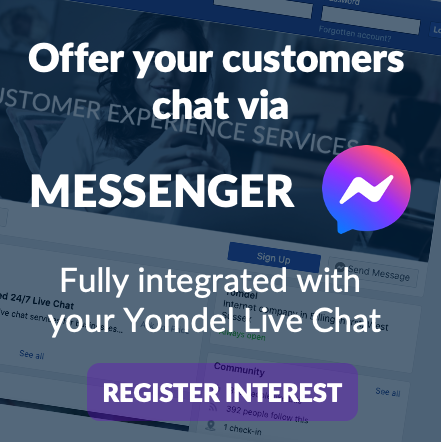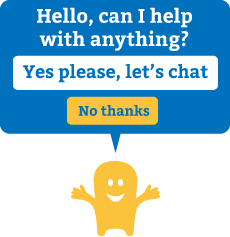By Rob North, COO, Yomdel
In previous blogs in this five part series about testing live chat for your website we’ve looked at goal setting, test coverage and information requirements. Once you’ve got this information you can think about what resources you’ll need in order to undertake the testing.
The resources you choose to deploy will of course depend on what your information requirements are, and you can back track through Yomdel’s test plans by reading earlier blogs on the subject. Taking all our goals and requirements on board, below are the resources that we use when testing live chat services for clients.
Client ‘deep dive’
One of the first things we do prior to establishing live chat on a client website is a deep dive into the business. This helps us to understand the key statistics and the goals of the client. This is very important for us because we are implementing, managing and operating live chat for other businesses, but also because it’s important to ensure goals are achievable in light of key statistics. The number of unique users you receive to your website, the conversion rate and average order value will all have a significant bearing on the results that an ecommerce website receives from live chat. Therefore the information that is obtained from a deep dive is a crucial testing resource.
Testers
You’ll of course need to ensure you have the time or resources available to you so that you can undertake test chats. It goes without saying that the more people you can use for testing the richer the feedback you will get. Different people will respond differently to the same chat because some people are, for example, more patient than others. Or what is important to person A might not be important to person B. Try to ensure that you get test feedback from several end users and also try to establish how they felt whilst having the chat.
Tasks/questions
Tasks and/or questions will be the backbone of your live chat testing. Think about the types of questions that your operators will be asked by a range of different customers in range of circumstances. Don’t be afraid to put your operators in uncomfortable situations and give them lots of questions even if you think they cannot answer them. It’s better to practice and be prepared when a real customer comes along with a real problem that needs to be resolved quickly and effectively.
Operators
Ensure that your operators are standing ready. By the time you get to testing them they should be fully configured within, fully familiar with and trained to use the live chat system as well as trained to answer all the key questions about the business they represent.
Transcripts
You should be able to read transcripts of all the chats that come through via your testing process so that you can keep an eye on what is actually taking place. Most live chat technology either holds the transcripts of chats somewhere you can access them in the admin area or gives you the option to receive them by email immediately after a chat has taken place.
Surveys/ratings
Ensure that post chat surveys and/or functionality that enables testers to rate the operators’ performance is available during testing as the scores given will give you a very good and early indication of how well things are going from the end user’s point of view.
Initial designs
Testing is about ensuring the entire customer experience is fully optimised on your live chat service, so pay attention to the way in which testers respond to the live chat button, and even once the early testing is over, and the service is in full swing, it makes sense to analyse the performance of your chat button design on a regular basis. If possible, split test different options to see what works best. Maybe different options will work better than others at different times.
Chat technology
In order to ensure your online customer service capability is working at peak performance levels you’ll need to make sure your chosen technology is easy to use, robust and - ideally - constantly being updated and upgraded with new features to improve ease of use for your operators and thus service delivery for your end users.
Feedback loops
Communication is the key to success. Look for ways that feedback can be looped between customers, operators, techies, the business and all the key stakeholders quickly and easily so that information flows constantly and the knowledge base continues to grow and evolve. This is the key to continuous improvement.
Live chat test management tools
Think about the tools that you will deploy in order to manage the initial and ongoing testing of your live chat service. Will you need test sheets? If so what will they look like? Perhaps you will want your testers to show how they felt at different parts of the chat. Or perhaps you will simply ask your testers to complete the post chat survey and score the operator’s’ performance at the end of the chat. Perhaps you need to know how many unique users who came to a certain page saw your live chat button, and why those that ignored it did so. There are no hard and fast rules other than that - I'd suggest - your tools should be driven by your goals.
People with the willingness and availability to make (continuous) improvements to all the test coverage areas
A major factor in your ability to deliver continuous improvement in your live chat service will be the willingness and ability of the key people involved to help you. It’s no good planning to split test different chat buttons, for example, if your designer does not have the time to evolve the design when feedback requires it. It’s no good testing how well the technology is working for your operators if you have not bought a system that is upgraded by the supplier and/or you do not have the development resources to make improvements to existing functionality.
Therefore this is often a good point at which to review your goals and your planned test coverage. Ask yourself whether it’s still possible and desirable to meet all your original goals. You may find through the process of deciding what resources you need and in establishing what resources you have available, that you will focus on fewer areas and thus limit your information requirements to a few key measures.
So long as you are clear about your goals and realistic about the resources that you have in order to meet those goals you are well on your way towards meaningful testing of your live chat service.
Next time I’ll look at process. Happy Yomdelling!
About the author: Rob North is the COO of Yomdel and is passionate about getting things right. He also owns a kayak and likes pottering about on Sussex rivers.






